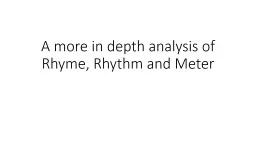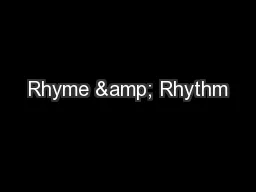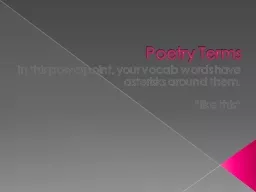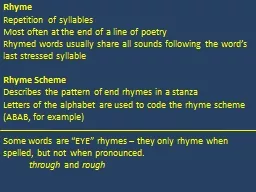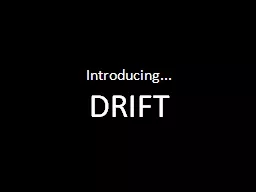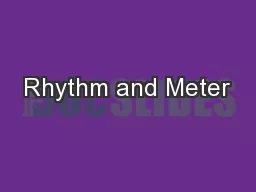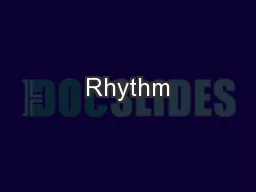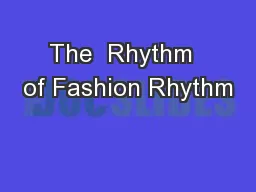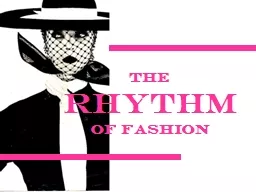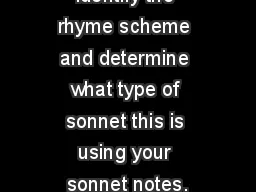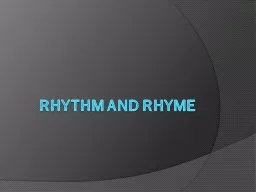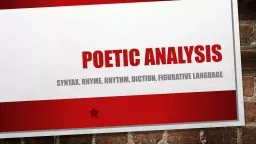PPT-A more in depth analysis of Rhyme, Rhythm and Meter
Author : olivia-moreira | Published Date : 2017-12-05
RHYME The repetition of sounds Example hat cat brat fat mat sat My Beard by Shel Silverstein My beard grows to my toes I never wears no clothes I wraps my
Presentation Embed Code
Download Presentation
Download Presentation The PPT/PDF document "A more in depth analysis of Rhyme, Rhyth..." is the property of its rightful owner. Permission is granted to download and print the materials on this website for personal, non-commercial use only, and to display it on your personal computer provided you do not modify the materials and that you retain all copyright notices contained in the materials. By downloading content from our website, you accept the terms of this agreement.
A more in depth analysis of Rhyme, Rhythm and Meter: Transcript
Download Rules Of Document
"A more in depth analysis of Rhyme, Rhythm and Meter"The content belongs to its owner. You may download and print it for personal use, without modification, and keep all copyright notices. By downloading, you agree to these terms.
Related Documents

